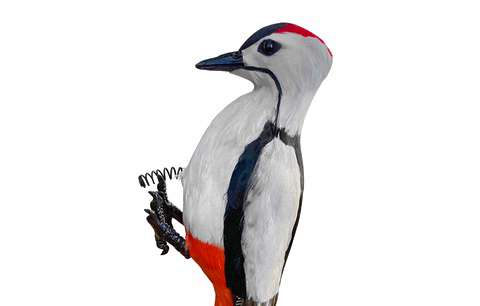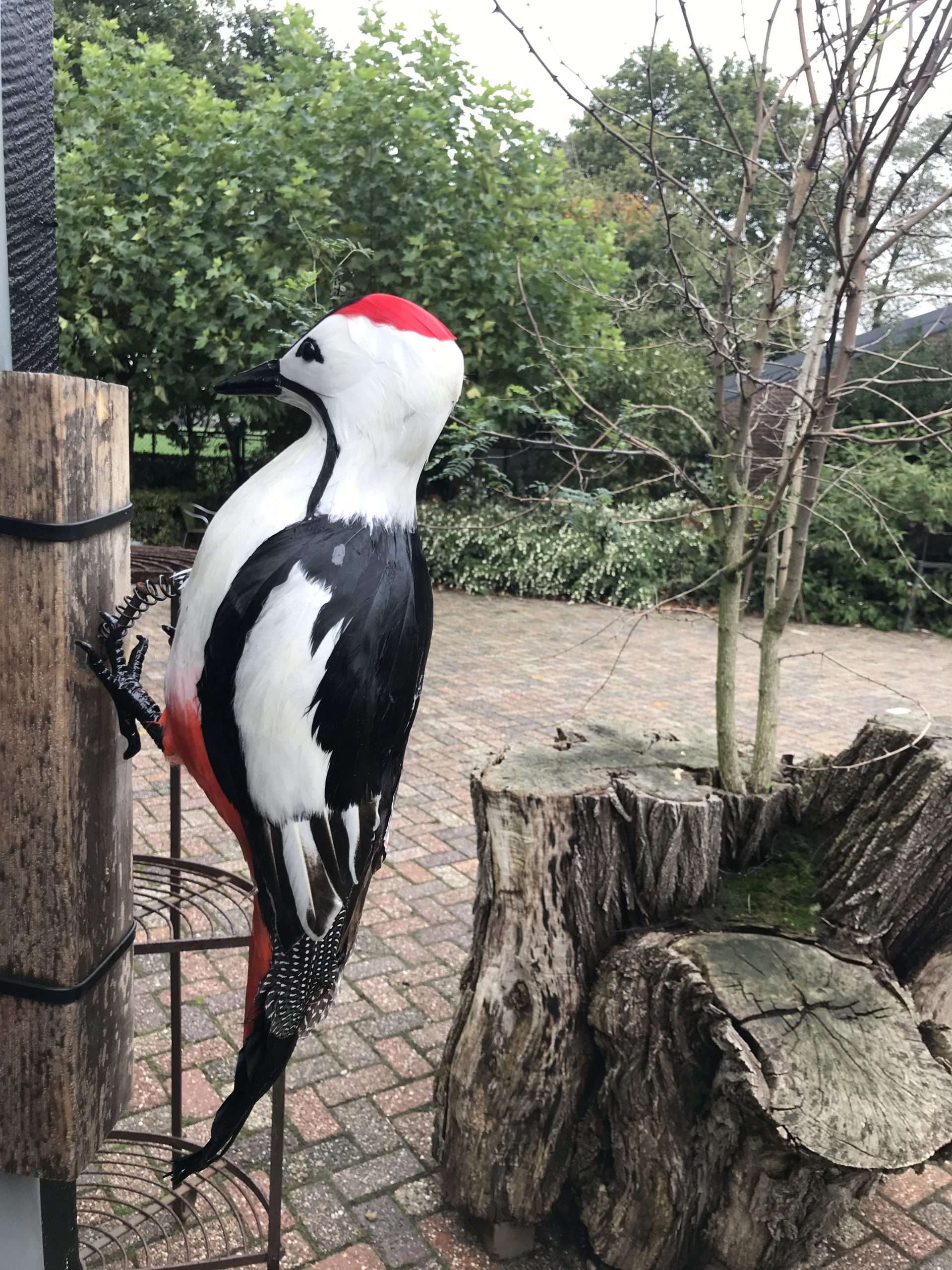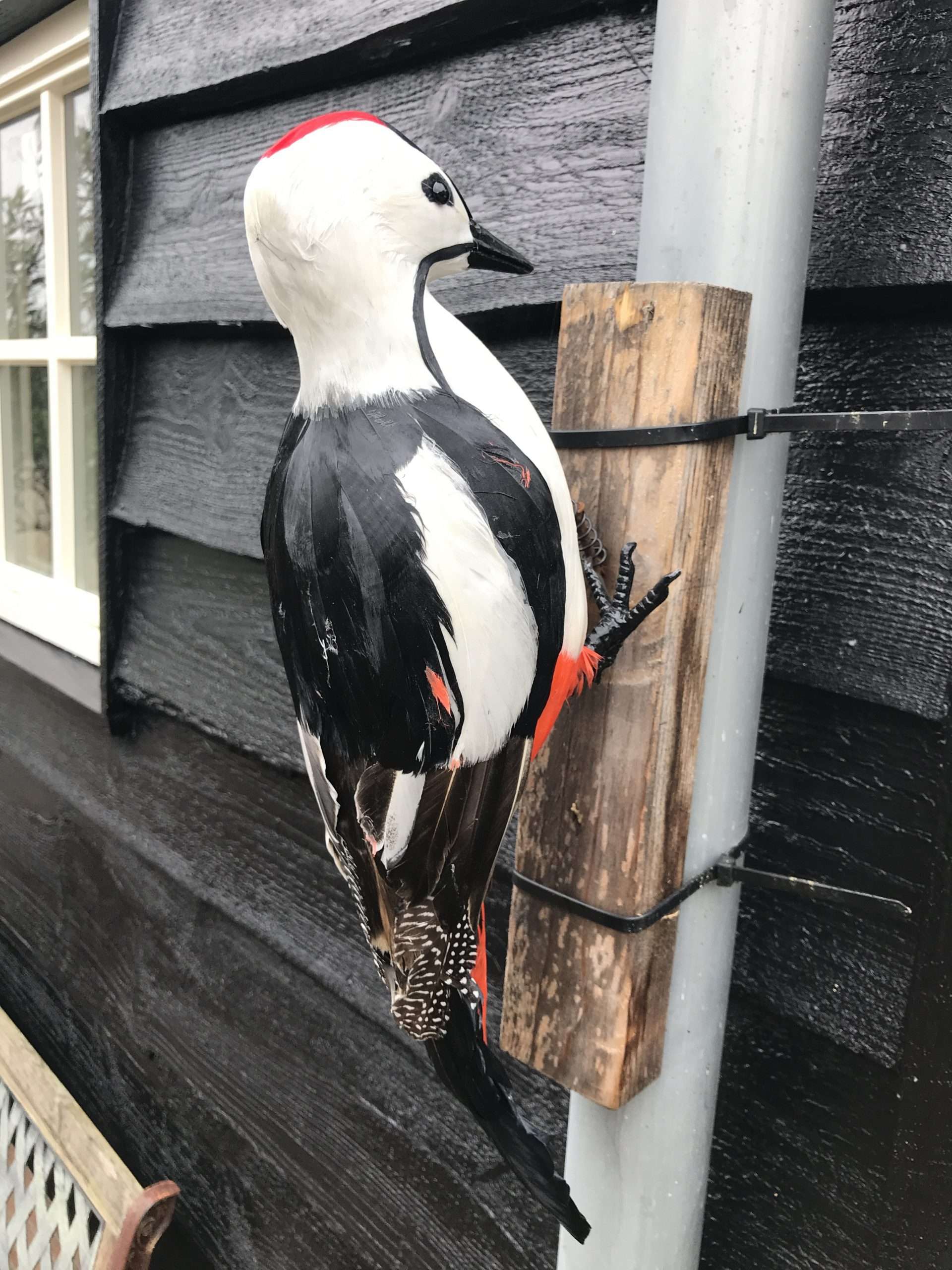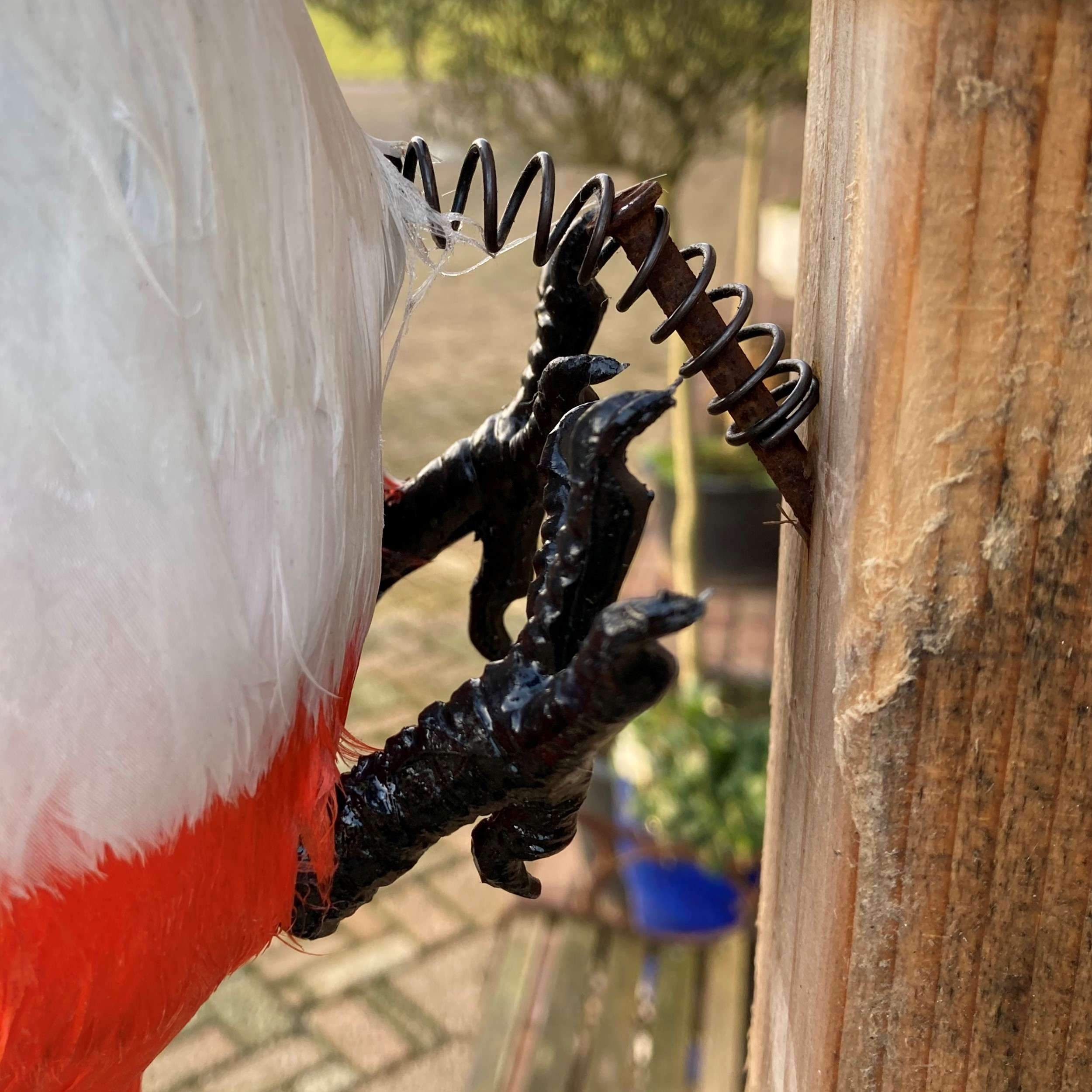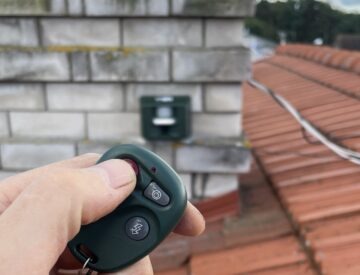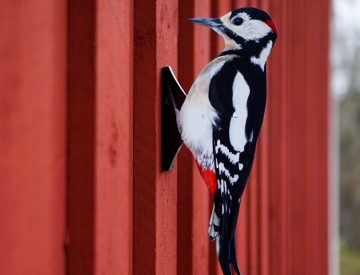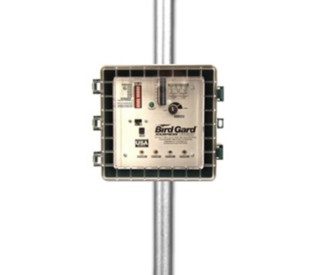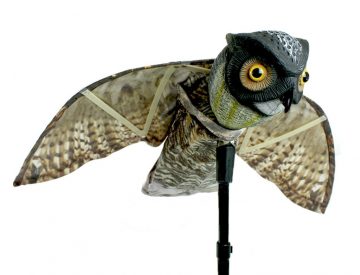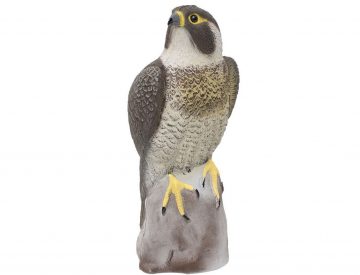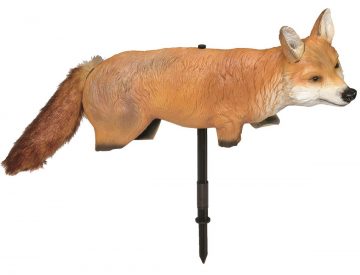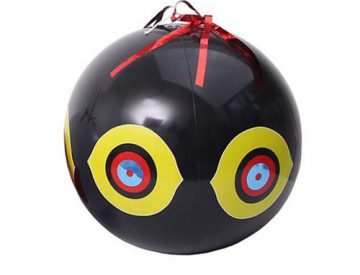Description
Woodpecker Deterrent
Woodpecker decoy, our efficient woodpecker deterrent, keeps real woodpeckers away and protects your home from their damaging activities. This lifelike decoy resembles a real woodpecker and is an invaluable tool in your bird control arsenal. Attached to a spring, the decoy moves naturally with the wind, creating a convincing illusion of a living bird.
The decoy features a durable base easily mounted on any wall. Its authentic appearance exploits the territorial nature of woodpeckers. When the real bird sees the decoy, it instinctively believes the territory is already occupied and moves on to a new area.
Designed for long-lasting outdoor use, this woodpecker deterrent is weather-resistant and maintains its integrity through all seasons. This simple yet effective solution protects your wooden structures from the persistent pecking of woodpeckers.
Height of the figure is 46 cm.
Maintain the integrity and aesthetics of your home with a woodpecker deterrent
Deterring woodpeckers is important for maintaining the integrity and aesthetics of your home. These birds are naturally inclined to drill into wood for several reasons.
Woodpeckers primarily drill into wood to search for insects. They are adept at detecting the presence of bugs beneath the surface of wooden structures, which they peck away to access their next meal. This behavior can cause extensive damage to wooden siding, trim, and eaves as the birds create numerous holes in their quest for food. Over time, these holes can compromise the structural integrity of the wood.
Another reason woodpeckers target houses is for nesting and roosting purposes. They create cavities in wood to build their nests or find shelter, particularly during the breeding season. These cavities can be large and deep.
Woodpeckers also use their drumming behavior to mark territory and communicate with other woodpeckers. This involves rapidly pecking on resonant surfaces to produce a loud sound. While this behavior is less about seeking food or shelter, it still damages your home.
Frequently Asked Questions
How do I know if I have a woodpecker problem?
Signs of a woodpecker problem include hearing persistent drumming sounds, finding holes in wooden structures, seeing woodpeckers frequently around your property, and noticing wood chips or debris near drilled areas. If you observe these signs, woodpeckers are likely active on your property.
What type of damage can woodpeckers cause to my home?
Woodpeckers can cause significant damage by drilling holes into wooden siding, trim, eaves, and other wooden structures. This can lead to structural weakening, water damage, and insect infestations.
Why are woodpeckers drilling on my house?
Woodpeckers drill on houses primarily to search for insects hiding in the wood, create nesting or roosting sites, or communicate and mark their territory. The sound of their drumming is also a way to attract mates. If they find a suitable spot on your house, they can cause significant damage over time.
Does this woodpecker decoy really work?
Yes, woodpecker decoy can be effective because woodpeckers are territorial and will avoid areas that appear to be occupied by other woodpeckers. A decoy that mimics the appearance of a woodpecker can trick the birds into thinking the territory is already claimed.
Can woodpeckers damage other parts of my property besides wooden structures?
While woodpeckers primarily target wooden structures, they can also damage other parts of your property, such as stucco, metal, and synthetic siding, if they are drumming to mark territory. They might also damage trees by drilling into them to find insects or create nesting sites.
Are there specific times of the year when woodpecker activity is higher?
Woodpecker activity is typically higher in the spring and fall. In the spring, woodpeckers are searching for mates and nesting sites, which leads to increased drumming and drilling. Fall activity may increase as they prepare for winter and establish territories.
Should I use multiple woodpecker deterrents at the same time?
Yes, using multiple woodpecker deterrents at the same time can be very effective. Combining woodpecker decoy with reflective tape will make the property less appealing to woodpeckers.
